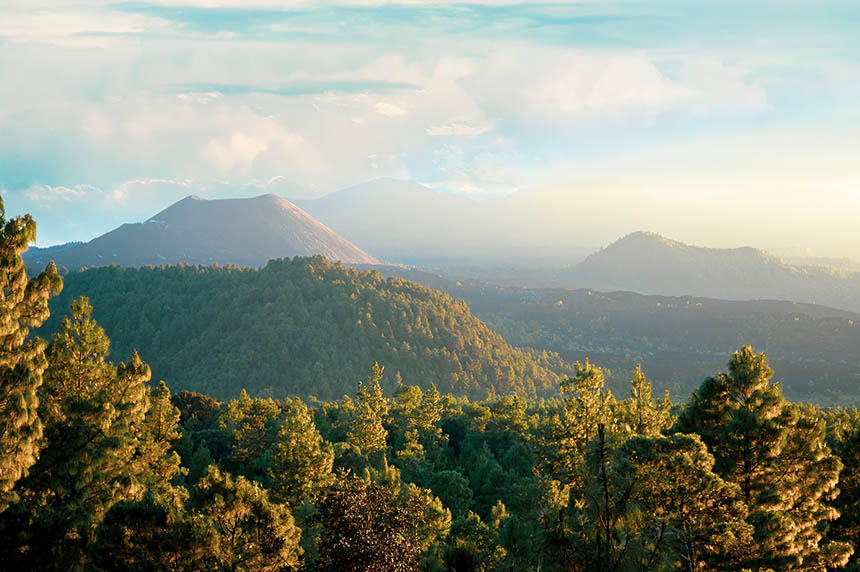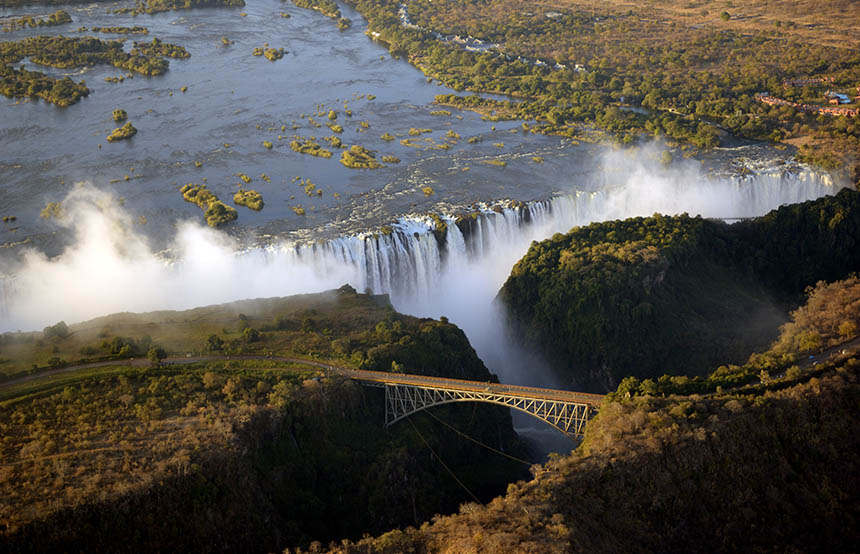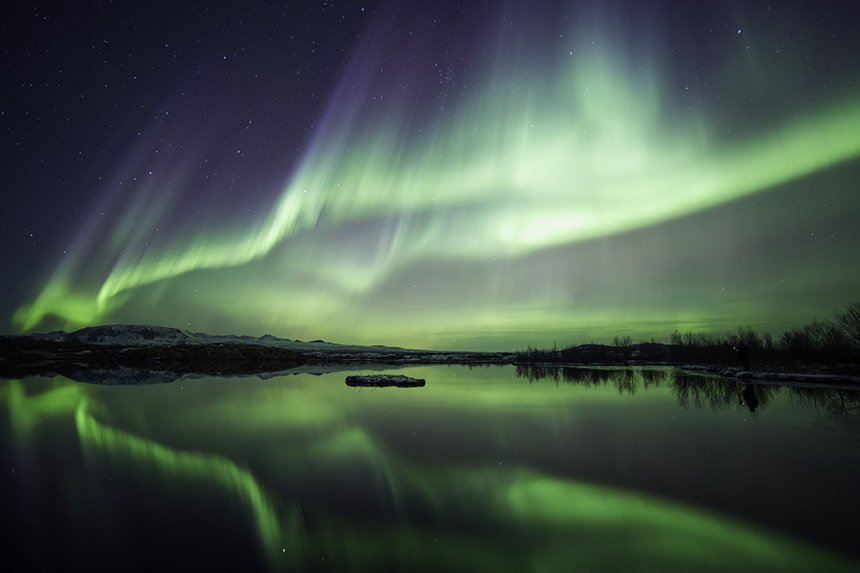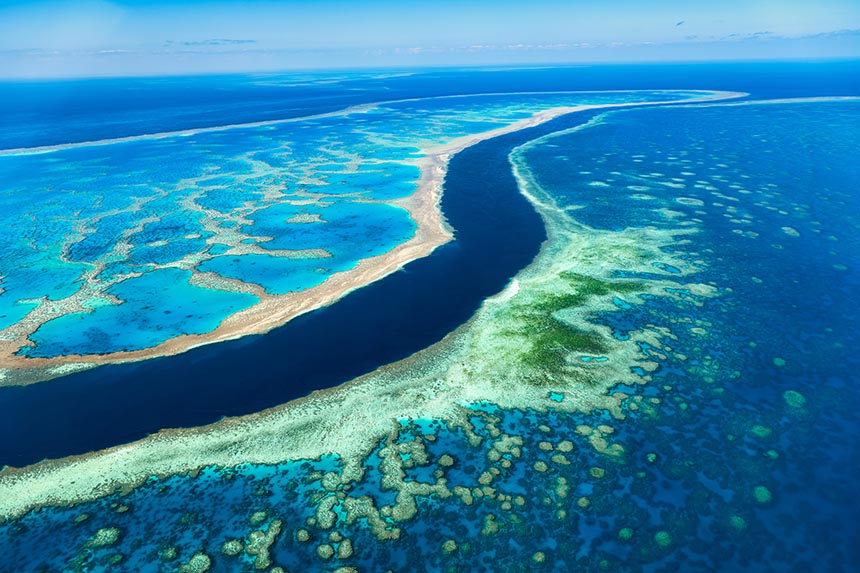Our Earth is brimming with natural marvels. Great glistening lakes, mountainous amphitheatres and lunar-like salt plains are among some of the most amazing natural spectacles that fill the Earth’s surface, but there are seven places in particular that should be at the top of your bucket list. Whether hiking to the world’s tallest peak, watching from a snowmobile as the sky becomes a natural light show or listening to a deafening slab of water from a hovering helicopter, Earth’s natural wonders never fail to impress. Read on to discover all about the seven natural wonders of the world…
- Paricutin, Mexico
- Grand Canyon, Arizona
- Victoria Falls, Zimbabwe and Zambia
- Harbour of Rio de Janeiro, Brazil
- Northern Lights, Scandinavia
- Mount Everest, Tibet and Nepal
- Great Barrier Reef, Australia
Paricutin
Mexico
As most of Earth’s features were formed thousands, if not millions of years ago, it is rare for humankind to witness the birth of one of them. Paricutin volcano in the Mexican state of Michoacan is an exception, as it appeared as if by magic and began erupting in 1943. Scientists have been able to study its life from its first ground-breaking (quite literally) eruption, through to its last, making it a truly unique tectonic formation. Meander through the once-hot lava fields that surround the volcano either on foot or horseback with a private guide, before reaching the Ancient Church of Juan Parangaricutiro, standing tall above its rocky surroundings as the only building that survived the catastrophic eruption.

Grand Canyon
Arizona
When perched on the edge of the Grand Canyon’s parched wilderness, you realise that all you can see, for as far as the eye can reach, is an arcade of rocky russet outcroppings. The sheer scale and size of Arizona’s biggest blockbuster, combined with the beautiful terracotta-coloured landscape puts the Grand Canyon firmly on the list of the top natural wonders of the world. Catch a bird’s eye view of the clay-coloured cliffs from the comfort of a helicopter and keep your eyes peeled for the enormous Hoover Dam. For an adrenaline kick, head into the world-famous gorge for the ultimate white water rafting experience on the Colorado River’s raging rapids.
Victoria Falls
Zimbabwe and Zambia
As the largest sheet of falling water in the world at 2,903ft tall (about twice the height of the Empire State Building), Victoria Falls has definitely earned its place on the list of the top natural wonders of the world. Known by locals as ‘the smoke that thunders’, its billowing mist and impressive bellow can be seen and heard from over 25 miles away. Sail over the scenery-blurring spray and see the power of the falls from above in a helicopter, or enjoy nature’s warm embrace by wallowing in Devil’s Pool as the Zambezi’s raging waters flow past.

Harbour of Rio de Janeiro
Brazil
It is no wonder that when Charles Darwin visited Rio de Janeiro’s harbour (Guanabara Bay) in 1832, he fell in love with its ‘almost unreal’ beauty and sheer scale. As the deepest natural harbour in the world, fringed with captivating beaches and buzzing with the rhythms of Rio, the harbour has a well-deserved place on the list of the top natural wonders of the world. Recline on a deck chair on the golden crescent beach under the shadow of the granite monoliths and Sugarloaf Mountain that surround the bay. Take a guided hike to see how far you can clamber up Sugarloaf’s sweet peak before heading back to the hum and bustle of Rio for a zesty caipirinha as the soundtrack of the city swirls around you.
Northern Lights
Scandinavia
Take a glance at most people’s bucket list and somewhere on there you’re likely to spot ‘see the Northern Lights’. The Northern Lights, or aurora borealis, are a natural phenomenon which have the ability to bewilder spectators, easily securing them a position on the list of the top natural wonders of the world. Between late September and early April in the northern regions of Scandinavia, Alaska, Canada and Iceland, the heavens transform into a natural lava lamp as streaks of emerald, sapphire and amethyst swirl through the midnight sky. Wherever in the world you choose to watch it, the luminescent light show is certain to create a disco effect in the night sky. Peek out through the curtains at the natural phenomenon from the comfort of a cosy bedroom, or head out into the wild Arctic wilderness on snowmobiles to see ethereal streams of iridescent colours bouncing off the frost-glazed Scandinavian scenery.

Mount Everest
Tibet and Nepal
At a whopping 29,029 ft tall (which is about the cruising altitude of a commercial plane), Everest is the ultimate playground for thrill seekers and adventure afficionados. This monstrous mountain is shared by Tibet and Nepal, so there many opportunities to see the geological wonder, either up close and personal or from the skies. Head out on a small plane and soar the great peak, keeping an eye out for Everest’s frosted tips poking out above the clouds. If you want to experience true Everest, grab your heavy-duty hiking gear and head out with a local guide to explore the lower slopes of this mighty mountain.
Great Barrier Reef
Australia
Like the Sydney Opera House, kangaroos and the Outback, the Great Barrier Reef is an iconic symbol of Australia. The breath-taking beauty and ecological importance of this natural wonder gives it icon status without even trying. As the world’s largest single structure made by living organisms, and home to ten percent of the world’s fish species, it is no wonder that taking the plunge into the aquamarine Pacific waters that surround the reef is a bucket list topper for most. Don a snorkel and pootle through shoals of fish on the shimmering surface, or head deeper with a dive guide to explore what lies further below the surface (which would be our friends’ at Original Diving’s preferred option, naturally).

Written by Immy Kelly













